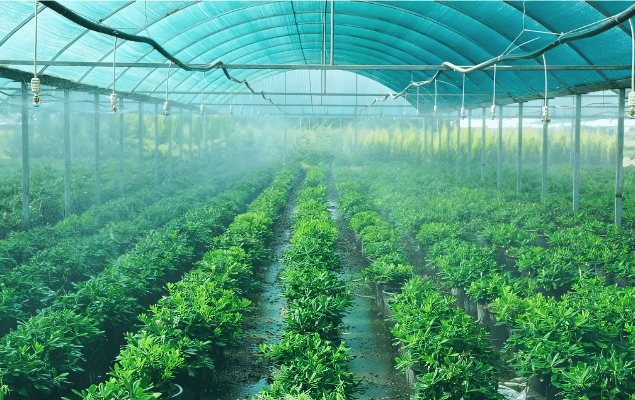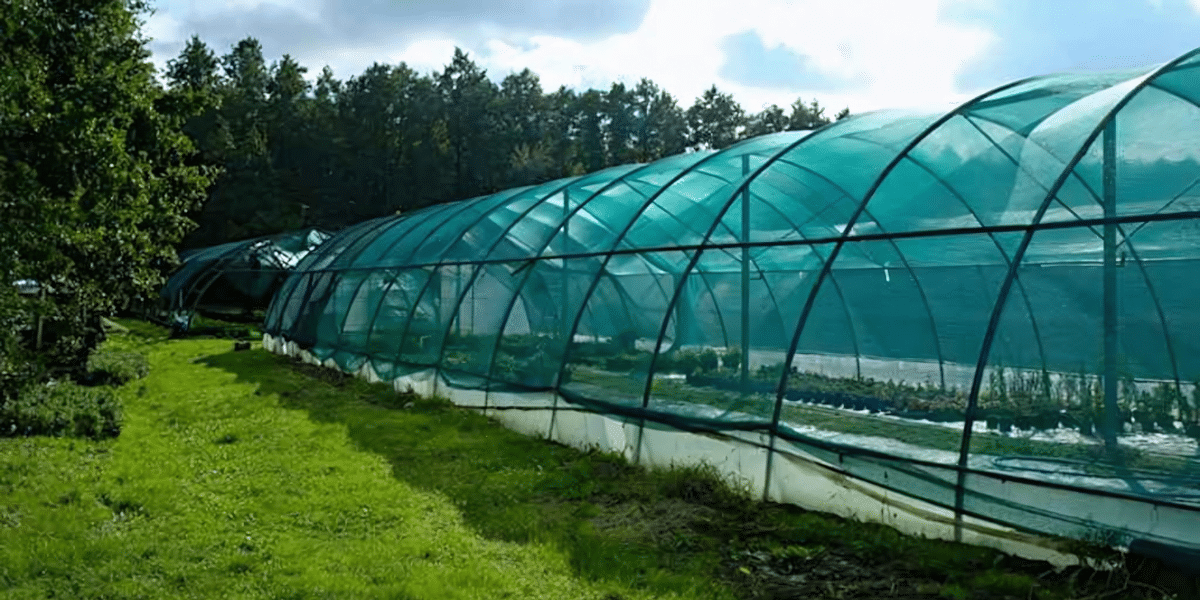Protecting crops from extreme weather is of paramount importance in the constantly changing world of agriculture. Farmers are faced with a variety of challenges, ranging from intense heat waves to heavy rainfall and sudden frosts. Shade nets are a popular solution. Green shade nets, in particular, have been proven to be very effective at protecting crops and improving yields. This blog will examine how green shade nets protect crops from extreme climate conditions and increase agricultural productivity.
Understanding Shade Nets
Shade nets protect your plants with durable materials such as polyethylene. The nets are designed to create a controlled climate for plants by controlling sunlight, temperature, and moisture. Shade nets are available in a range of shading percentages, from 30% to 90 percent, so farmers can choose the best option for their crop. Green shade nets are a popular option due to their versatility and effectiveness.
Heatwave Protection
Shade nets are a great way to protect crops from high temperatures and intense sunlight. Heat Waves cause plants to be stressed, resulting in reduced growth and yields. Installing green shade nets allows farmers to create a microclimate cooler, reducing the risk of heat stress. A shade net house, for example, can reduce the temperature by several degrees and ensure that plants are healthy and productive during the peak summer months.
Heavy Rain Mitigation
Storms and excessive rainfall can damage crops and cause physical erosion. Shade nets can act as a barrier to reduce the impact of heavy rainfall and prevent soil compaction. This controlled water penetration maintains optimal soil moisture, preventing root decay and other water-related problems. Farmers using green nets for gardens can significantly improve water management and reduce the risks associated with heavy rainfall.
Frost damage: How to Prevent It
Frost can cause serious damage to crops, especially in areas prone to abrupt temperature drops. Frost is formed when ice crystals form on the plant tissue, causing damage and cell rupture. Shade nets can help reduce frost damage because they trap heat during the day and release it at night. This maintains a slightly warm microenvironment surrounding the plants. This regulates temperature and reduces frost formation. It also protects crops that are sensitive to freezing temperatures.
Pest Control is Now More Effective than Ever
Shade nets are not only useful for protecting crops from the weather, but they also provide an extra layer of protection against pests. They act as a physical barrier to prevent insects and birds from reaching the crops. It reduces the use of chemical pesticides and promotes healthier, more sustainable farming methods. Greenhouse shade net can contribute to a higher quality of produce and a healthier environment.
Increased Yield and Quality of Crops
Shade nets provide a controlled environment that not only protects plants from extreme weather but also improves the quality of their produce. Shade nets regulate sunlight and temperature to ensure plants grow in optimal conditions. This results in better colors, sizes, and tastes of produce. Shade nets are also a good investment because they reduce environmental stress, which leads to increased yields.

Sustainability and Resource Efficiency
Shade nets help to promote sustainable farming by conserving water, reducing chemical inputs, and improving soil moisture retention. Shade nets can help conserve water by reducing the evaporation of water and increasing soil moisture. This is especially beneficial in arid areas where water scarcity can be a problem. The reduced use of pesticides, fertilizers, and other chemicals promotes healthier soils and reduces pollution.
Case Studies and Success Stories
Many farmers around the world have successfully used shade nets to improve their productivity and protect their crops. Tomato growers have used shade nets to protect their crops from excessive heat and sunlight. This has resulted in a marked increase in fruit yield and quality. Farmers in India also use shade nets to shield their crops from monsoon rainfall, which results in higher yields and crop survival.
Future Innovations
Research and innovation are aimed at improving the effectiveness of shade nets. To improve UV resistance and durability, advanced materials and coatings have been developed. The integration of smart technologies such as sensors and automated systems will also optimize the use and effectiveness of shade nets. They can provide real-time information on environmental conditions and enable precise control.
Conclusion
Green shade nets are a practical solution for protecting crops against extreme weather conditions. Shade nets can be used to shield plants from extreme weather conditions, such as heatwaves, heavy rainfall, and frost. They create a controlled atmosphere that improves the health of crops. Farmers can increase the productivity and sustainability of their farming operations by investing in high-quality shade nets, such as green shade nets and greenhouse nets.
For more information on how shade nets can benefit your agricultural practices, visit our page on shade net suppliers in UAE to explore our wide range of high-quality products designed to meet your farming needs.
Published by: Holy Minoza







